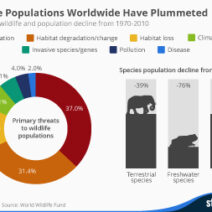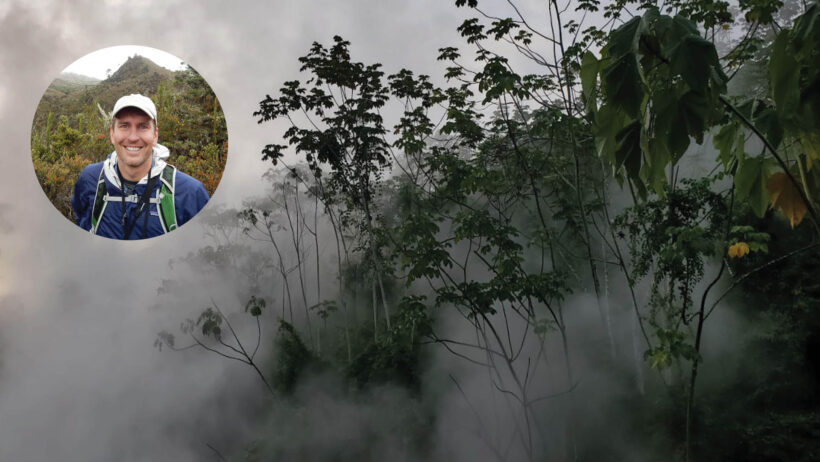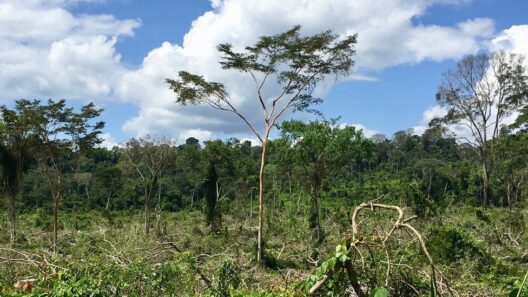The world’s tropical rainforests are often referred to as the “lungs of the Earth.” This metaphor encapsulates their vital function in the global ecosystem, as these verdant giants inhale carbon dioxide and exhale oxygen, directly influencing atmospheric composition and climate regulation. However, their role transcends mere oxygen production; rainforests are crucial players in the intricate dance of climate mitigation, acting as a bulwark against global warming. This essay delves into the multifaceted mechanisms by which tropical forests control global warming, revealing the essential nature of these ecosystems.
Tropical rainforests occupy only about 6% of the Earth’s land surface, yet they are responsible for approximately 28% of the Earth’s oxygen output. This impressive statistic illustrates not only their significance but also their capacity to sequester carbon—a critical process in averting the calamitous effects of climate change. Trees, through photosynthesis, absorb carbon dioxide—a greenhouse gas that contributes to global warming. In this way, forests serve as natural carbon sinks, locking away carbon for decades, if not centuries.
But the effectiveness of rainforests in sequestering carbon depends on their health and stability. Healthy ecosystems, characterized by diverse flora and fauna, can sequester more carbon than degraded or monoculture forests. Biodiversity enhances the resilience of these ecosystems, enabling them to adapt to environmental stresses. Tropical rainforests, with their complex interdependencies, exemplify this relationship. For instance, while larger trees store significant quantities of carbon, smaller understory plants also play a role in this dynamic process. Each organism, from towering mahogany trees to delicate ferns, contributes to the overall capacity of the forest to absorb carbon.
In addition to serving as carbon sinks, tropical forests regulate local and global climates through intricate hydrological cycles. Trees facilitate transpiration, the process by which plants release water vapor into the atmosphere. This process contributes to cloud formation and ultimately precipitation, affecting weather patterns far beyond the forest boundaries. When rainforests suffer from deforestation or degradation, this hydrological cycle is disrupted. This disruption can lead to droughts in surrounding areas and alter rainfall patterns, creating a domino effect that exacerbates the effects of global warming.
Furthermore, rainforests contribute to the global climate by maintaining temperature stability. The dense canopy of trees creates a microclimate that cools the air beneath. It acts like a natural air conditioner, moderating temperatures and providing a habitat for countless species. Without these forests, the increased heat from climate change would result in more extreme temperatures, further jeopardizing both biodiversity and human livelihoods. They are not just trees; they are climate regulators, nurturing the delicate balance necessary for life.
The deforestation of tropical rainforests, driven by agriculture, logging, and urbanization, poses an alarming threat to global warming mitigation efforts. When trees are felled, not only is their capacity for carbon sequestration lost, but the carbon that was previously stored is released back into the atmosphere. This creates a double negative impact. The United Nations Framework Convention on Climate Change (UNFCCC) recognizes the significance of reducing emissions from deforestation and forest degradation (REDD+). Such initiatives aim to curb deforestation by incentivizing forest conservation and sustainable management practices.
Also noteworthy is the symbiotic relationship between tropical forests and indigenous communities. They have evolved alongside these ecosystems for generations, understanding their nuances and complexities. Indigenous peoples play a critical role in conservation, maintaining practices that protect biodiversity while limiting environmental disruption. Their deep-rooted knowledge has the potential to guide sustainable resource management in ways that align with conservation goals. Collaborations between conservationists and indigenous communities could amplify efforts to combat climate change, ensuring that these precious ecosystems continue to thrive.
A key aspect of forest conservation is the promotion of sustainable practices. Agroforestry, for example, integrates trees and shrubs into agricultural landscapes, providing multiple benefits, including improved soil health, increased biodiversity, and enhanced carbon sequestration. Such practices not only mitigate climate change but also increase the resilience of farming systems to climate variability. By merging agriculture with forestry, benefits abound, providing food security while preserving vital ecosystems.
Moreover, the global appeal for protecting tropical forests aligns with social and economic interests. Numerous studies illustrate that forest conservation can yield significant economic benefits. The idea of “green economy” emphasizes the sustainable use of resources, where nature provides ecosystem services that can enhance livelihoods while combating climate change. Ecotourism stands as a beacon of hope, allowing countries to generate revenue while preserving their natural heritage, thus showcasing the intrinsic value of these forests beyond immediate economic exploitation.
In conclusion, tropical rainforests are integral to the fight against global warming. Their role as carbon sinks, climate regulators, and biodiversity hotspots cannot be overstated. As stewards of the Earth, it is imperative to recognize their significance and take substantive actions to protect and restore these vital ecosystems. The interlinked nature of climate change, biodiversity, and human livelihood emphasizes a collective responsibility towards sustaining these life-giving forests. The quest for survival amid climate change is not just about reducing greenhouse gas emissions; it is also about revering the irreplaceable treasures held within the heart of tropical rainforests. The time to act is now, for every moment lost is a moment in which the forest’s clarion call for protection echoes ever louder.








